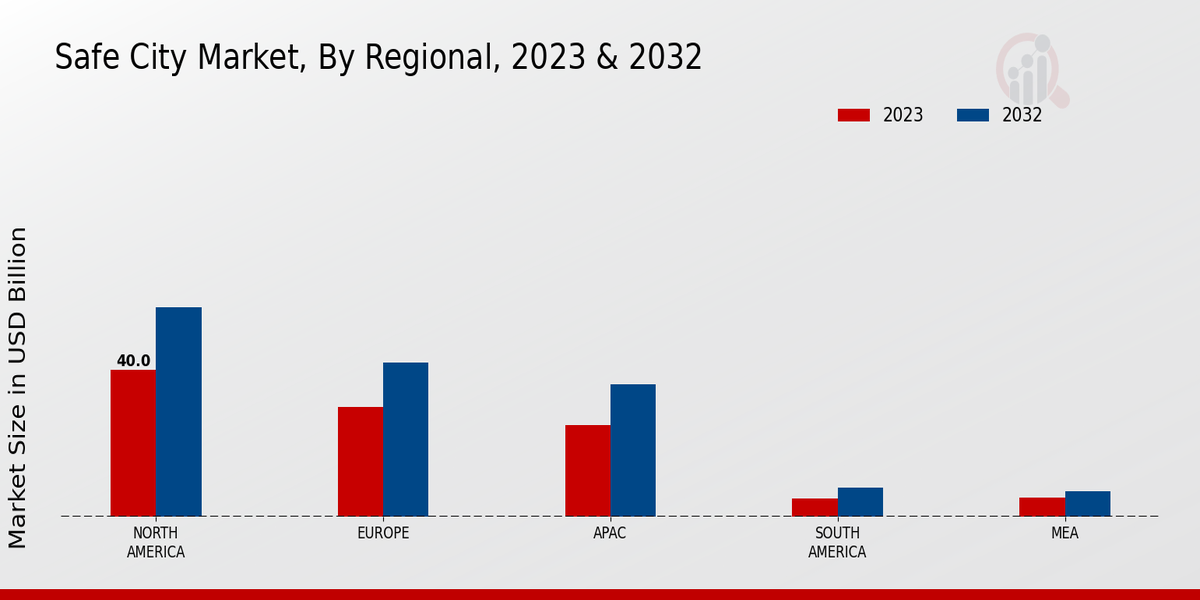Rising Crime Rates
The increasing prevalence of crime in urban areas is a significant driver of the Global Safe City Market Industry. As crime rates rise, there is a heightened demand for security solutions that can effectively mitigate risks and enhance public safety. Cities are compelled to invest in advanced surveillance systems, crime analytics, and community policing initiatives to address these challenges. This growing concern for safety is reflected in the projected market growth, with the Global Safe City Market expected to reach 110.0 USD Billion in 2024. The urgency to combat crime is likely to propel further investments in security technologies and services.
Increasing Urbanization
The rapid pace of urbanization globally contributes significantly to the Global Safe City Market Industry. As more individuals migrate to urban areas, the demand for enhanced security measures escalates. In 2024, the market is projected to reach 110.0 USD Billion, driven by the need for integrated security solutions in densely populated regions. Urban centers are increasingly adopting smart technologies, such as surveillance systems and emergency response frameworks, to address safety concerns. This trend is expected to continue, with the market anticipated to grow at a CAGR of 4.36% from 2025 to 2035, reaching 175.8 USD Billion by 2035.
Market Growth Projections
The Global Safe City Market Industry is poised for substantial growth in the coming years. With a projected market size of 110.0 USD Billion in 2024, the industry is expected to expand at a CAGR of 4.36% from 2025 to 2035, ultimately reaching 175.8 USD Billion by 2035. This growth trajectory indicates a robust demand for integrated safety solutions as urban areas continue to evolve. Factors such as increasing urbanization, government investments, and technological advancements are likely to contribute to this upward trend, positioning the market as a critical component of urban development strategies.
Technological Advancements
Technological advancements are pivotal in transforming the Global Safe City Market Industry. Innovations in artificial intelligence, machine learning, and the Internet of Things are revolutionizing urban safety solutions. These technologies enable real-time data analysis, predictive policing, and efficient resource allocation for emergency services. As cities adopt these cutting-edge technologies, they enhance their ability to respond to incidents swiftly and effectively. The integration of smart technologies into urban infrastructure is likely to drive market growth, as cities seek to leverage these advancements to create safer environments for their residents.
Government Initiatives and Funding
Government initiatives play a crucial role in shaping the Global Safe City Market Industry. Various countries are investing in smart city projects that prioritize public safety and security. For instance, national and local governments are allocating substantial budgets to enhance infrastructure and technology for urban safety. These investments often include funding for advanced surveillance systems, data analytics, and emergency response technologies. The commitment of governments to improve urban safety not only fosters public trust but also stimulates market growth, as these initiatives create a conducive environment for private sector participation and innovation.
Public Awareness and Demand for Safety
Public awareness regarding safety and security issues is increasingly influencing the Global Safe City Market Industry. Citizens are becoming more proactive in advocating for enhanced safety measures in their communities. This growing demand for security solutions is prompting local governments and private entities to invest in technologies that ensure public safety. Initiatives such as community engagement programs and safety awareness campaigns are gaining traction, further driving the market. As public expectations evolve, the industry is likely to adapt, leading to innovations that address the specific safety concerns of urban populations.























Leave a Comment